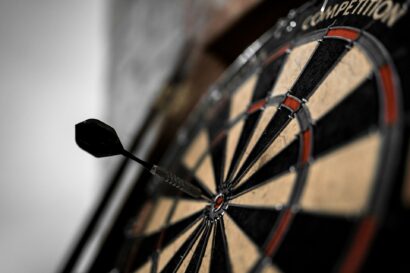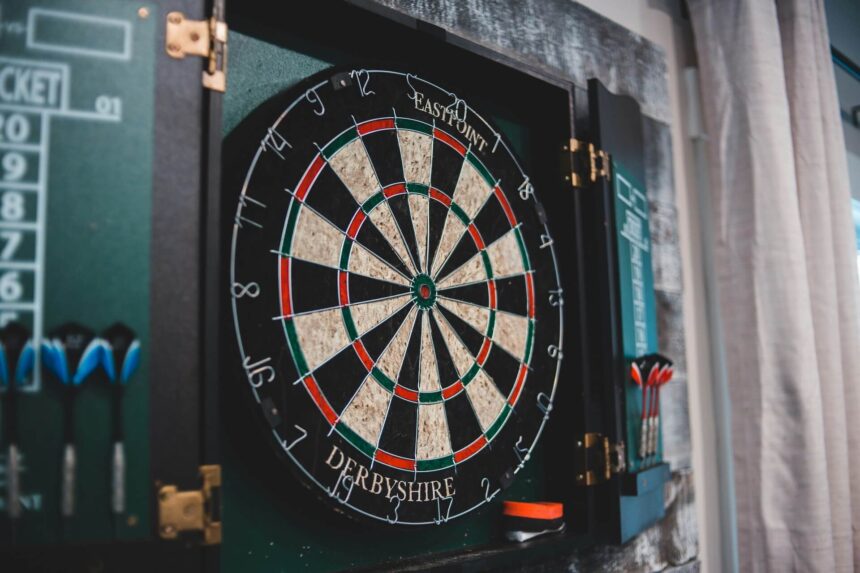
 Darts Betting Tips & News
Darts Betting Tips & News
A 180 is the highest possible score a player can achieve within a single turn (3 darts) in darts. It can only be achieved if the player hits triple 20 three times. But why is it so crucial to the game of darts? There are many factors to consider. It gives the player leg and match advantage. It massively helps the player’s confidence and gets the crowd cheering their corner as the darts community roars on the player when they hit the beloved 180.
Another huge part of a darts player’s success is consistently hitting successful checkouts. A checkout is when a player ends the leg by hitting the exact number of points needed to reduce their score to zero, using a double or a bullseye to do so. For example, a player on 40 can hit Double 20 to win the leg. Checkouts are what win you matches! Being a consistent checkout player separates a good player from a great player.
But looking at 180s vs checkouts, what’s more critical to a successful darts player? The ability to consistently hit 180s throughout a game or finish a game with precise checkouts. At TangoBet, we dive into the world of darts to see which aspect of the game generates more success for darts players around the globe.
The Importance of the 180 in Darts
It is a big part of the game; it allows players to reduce their score quicker than any other combination on the dartboard. This gives the player a massive advantage against their opponent in the race to zero. If a player can consistently hit 180s throughout a match, it adds immense pressure to the opponent, and builds on their momentum. They can completely shift the flow of the game.
Hitting 180s is also a great confidence booster for the player and can be seen as an intimidating display of precision for the opponent. Beyond the benefits of 180s in a match, the score is a favourite amongst the fans. The score is often met with loud cheers from the audience, and announcers have produced iconic calls over the years. This ultimately adds another layer of excitement to the sport. An achievement of hitting a 180 is a sign of an elite performer and is a key stat in evaluating top-tier players.
The Role of Checkouts in Darts Strategy
Checkouts are vital in darts’ strategy because they’re the only way a player can win the leg. Finishing on a double or the bullseye reduces their score to zero. While scoring with big numbers like 180s can set a player up for success in the match, the ability to consistently finish the game with successful checkouts separates the good players from the greats. Smart players will plan several turns ahead, aiming not for the high scores but for the scores that will leave them favourable checkouts.
Numbers like double 40, double 16 or double 8 are preferred due to their layout on the dartboard and are seen as “safety nets” if they do miss these doubles. High checkouts such as 100, 121 and the maximum checkout of 170 can be a huge turning point in a match. If hit, they can steal legs that were ultimately seen as out of reach by the opponent. A clutch checkout also has a significant emotional impact with the opponent often feeling deflated, while the victor energises the crowd. Precision, timing, and nerve merge in the checkout phase, and mastering the checkouts is the bullseye to succeeding in professional darts.
Player Statistics for 180s vs Checkouts
In professional darts, 180 and checkout statistics are good indicators of a player’s performance and preferred style. The number of 180s a player hits reflects their scoring power and rhythm; heavy scores often dominate this statistic. In the 2024/25 PDC World Darts Championship, Luke “The Nuke” Littler led the way for 180s with a total of 76. His competition wasn’t far behind as Luke Humphries followed very closely with 73 and Michael van Gerwen achieved 56 180s. The statistics show the aggressive playstyle of these players, often putting their opposition under immense pressure in the early stages of the match.
Checkout percentages measure how efficiently a player can finish a leg once they have reached a possible out. Peter Wright had the most successful checkout rate with 52%, Nathan Aspinall came in ever so close with 47%, Michael van Gerwen achieved a respectable 44%, and Luke Littler at 38%. These percentages highlight the difference between the high scorers and the clinical finishers. While Littler’s high scoring was unmatched, Peter Wright proved more efficient in the checkouts. Together, 180s and checkout stats offer the complete package of a player’s game. The number of 180s they hit shows how fast they can reduce their score, and the checkout percentages show whether they can make the big play in the defining moments of the match. The players who have demonstrated success in recent years (Littler and van Gerwen) consistently rank high in both departments.
As you think about your game, ask yourself the following question. Which aspect do I prioritise the most? Do I want to score big with 180s early in the match? Or do I want to focus on consistency in the checkout phase to win me the game? Successful players have a balance of both, but everyone has their style. To dive deeper into the latest stats and player insights, visit our darts news hub.Our betting site holds the newest player odds for the upcoming tournament.
Related articles



